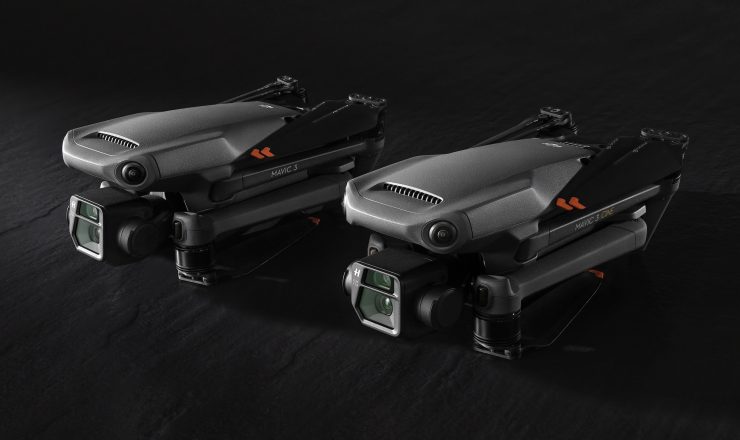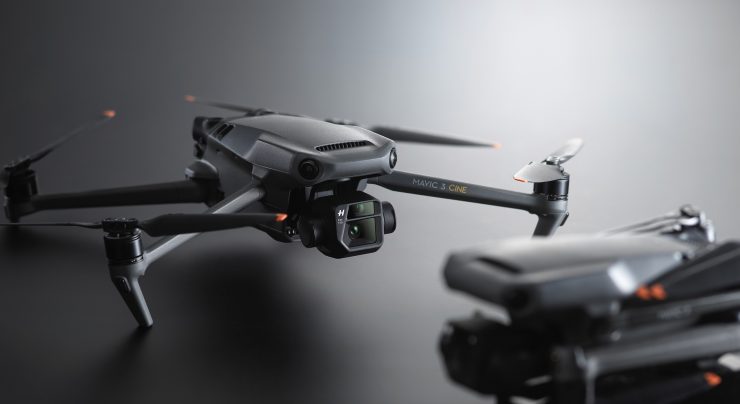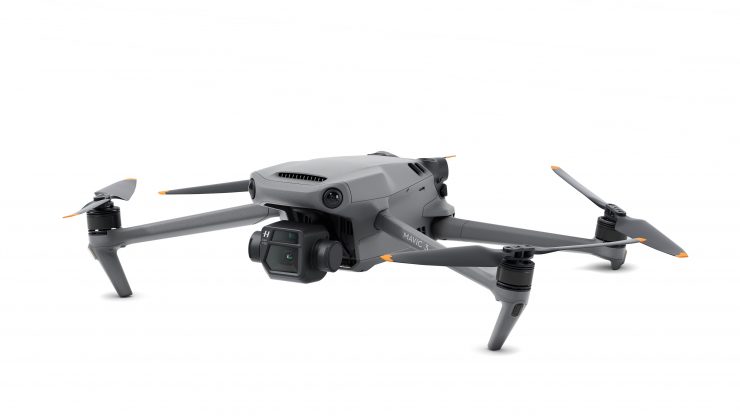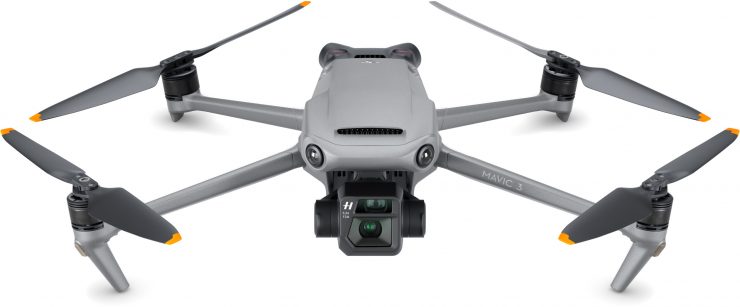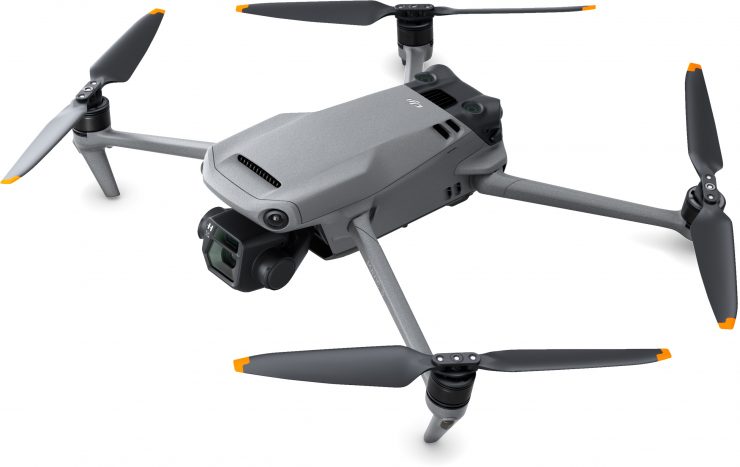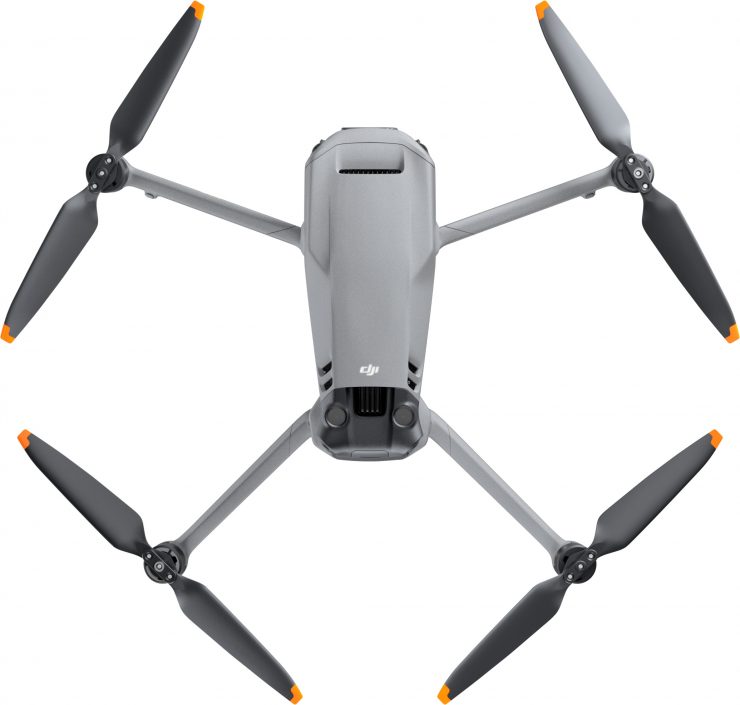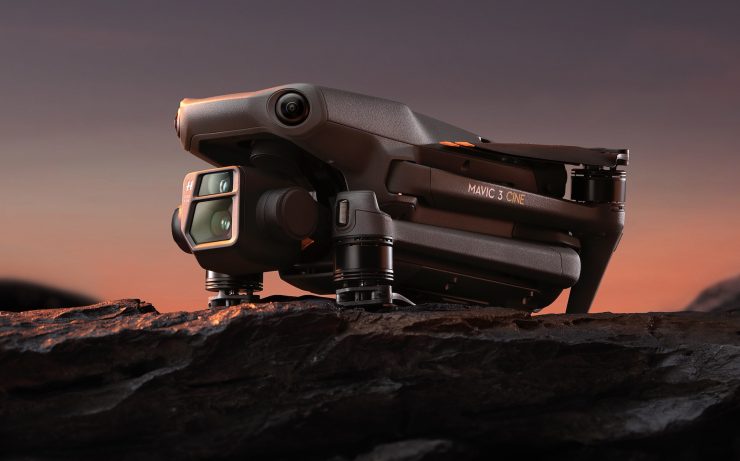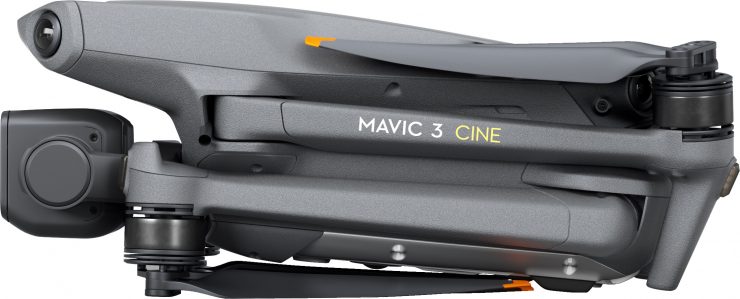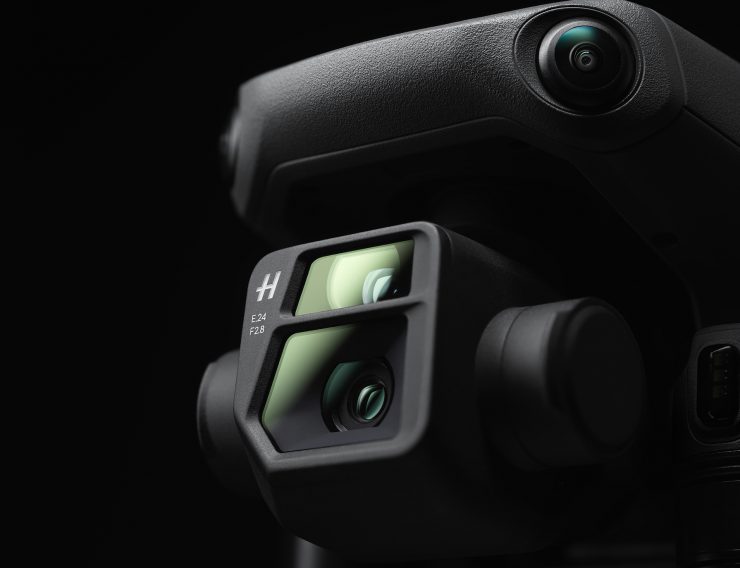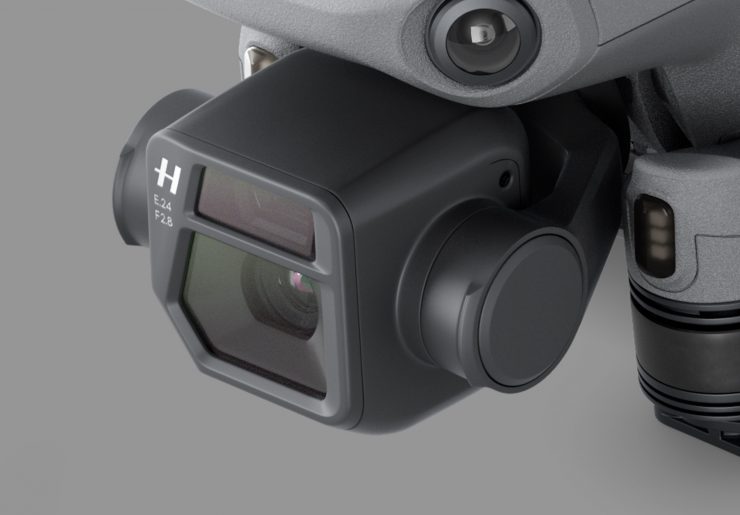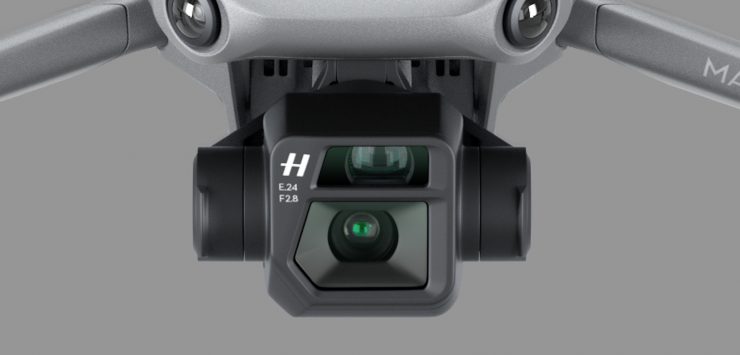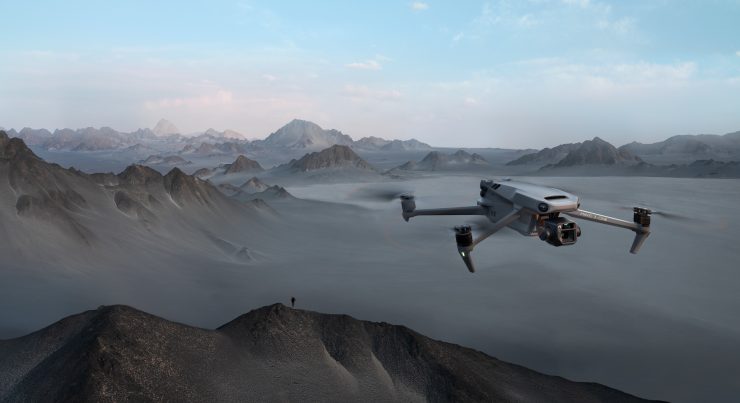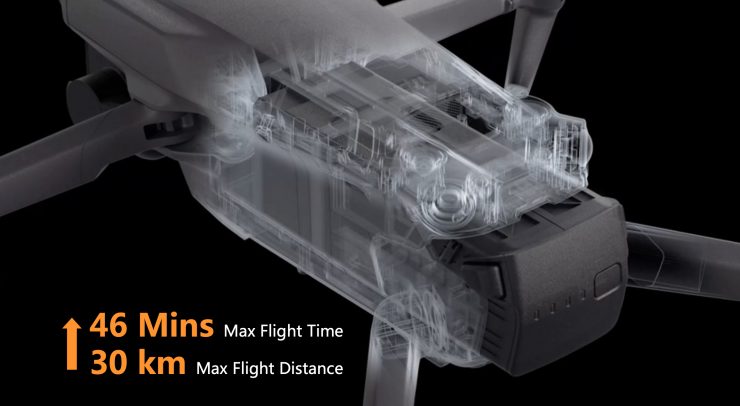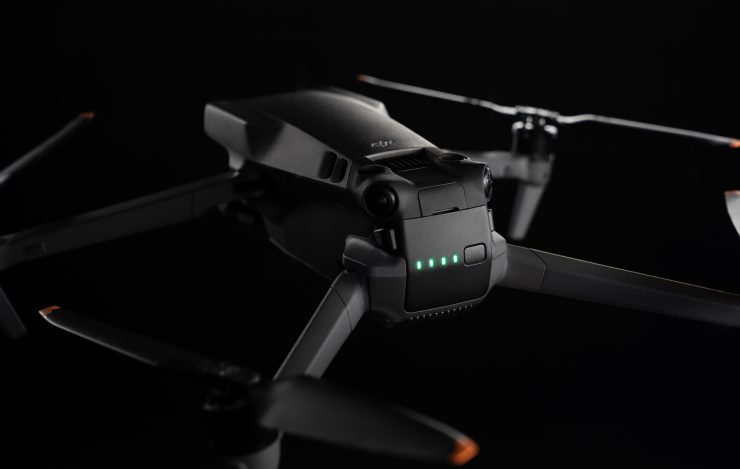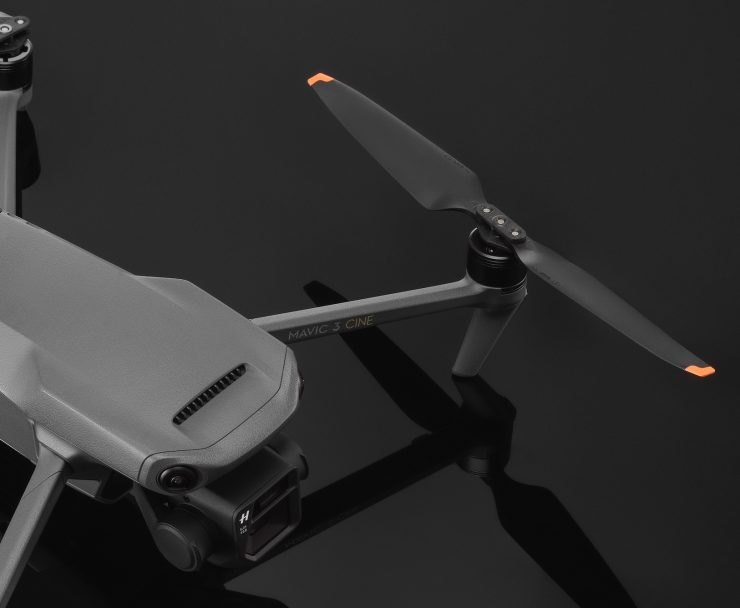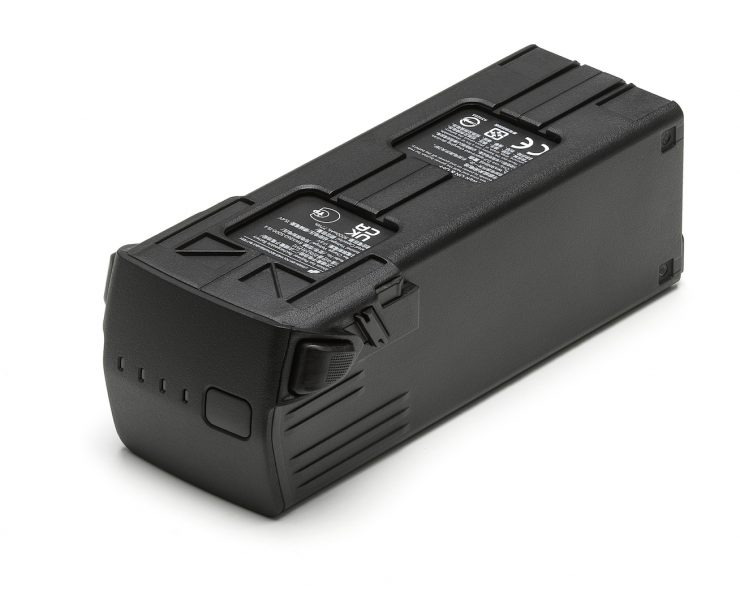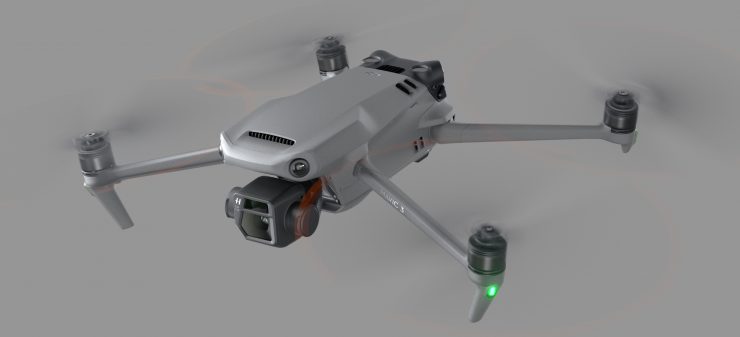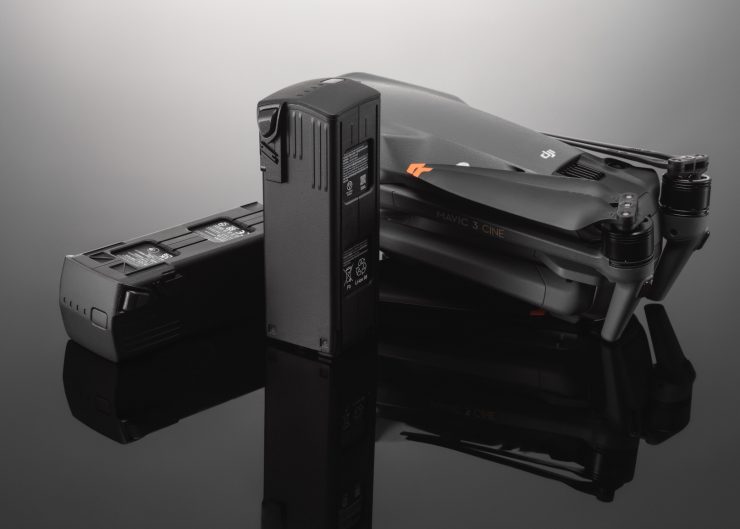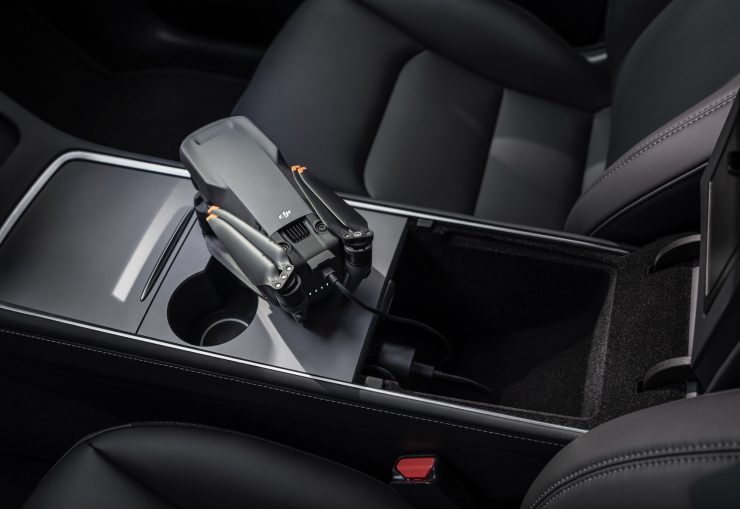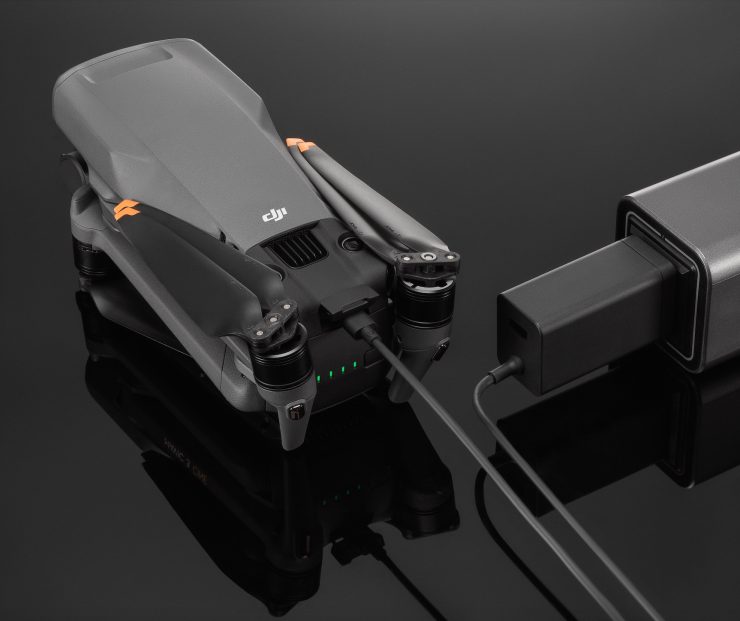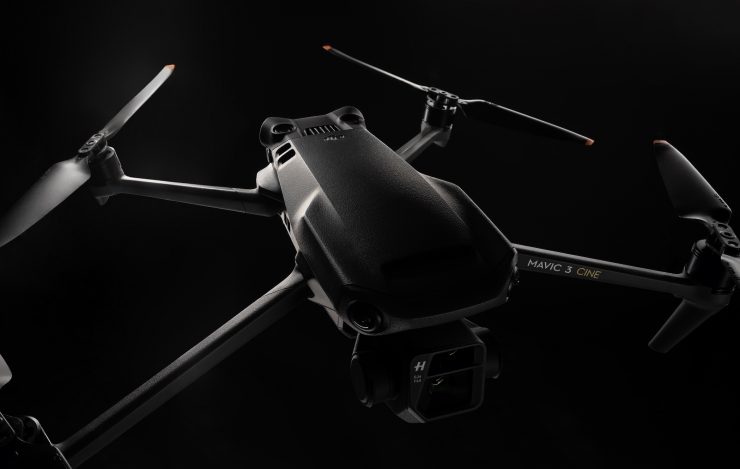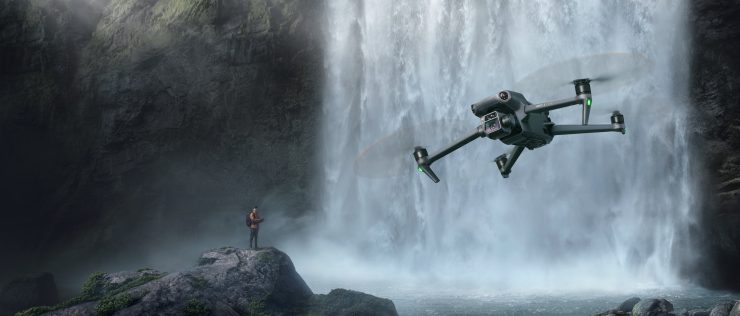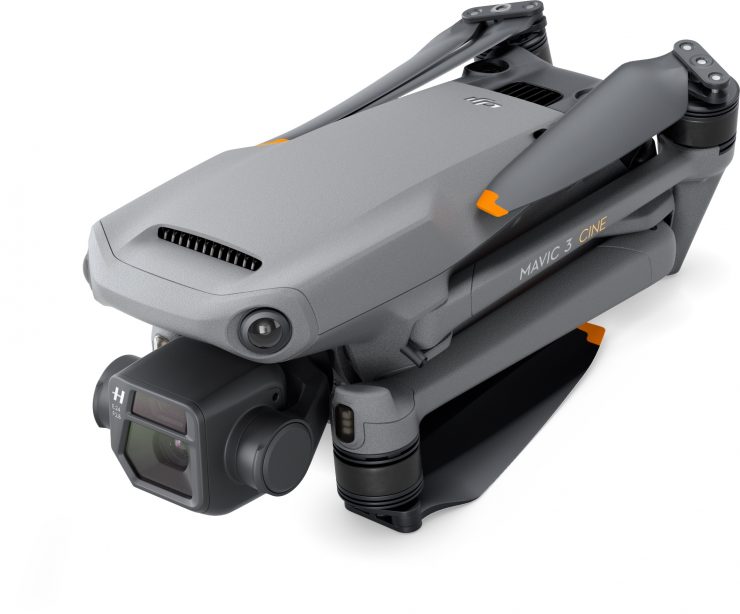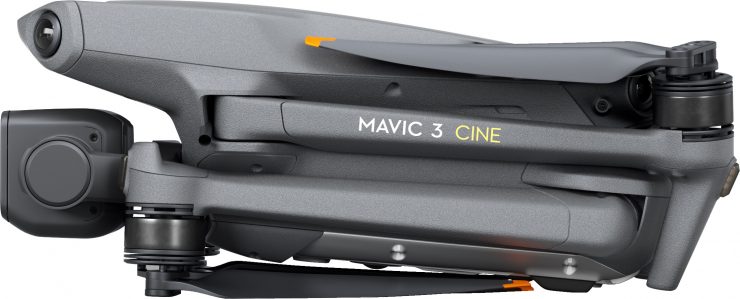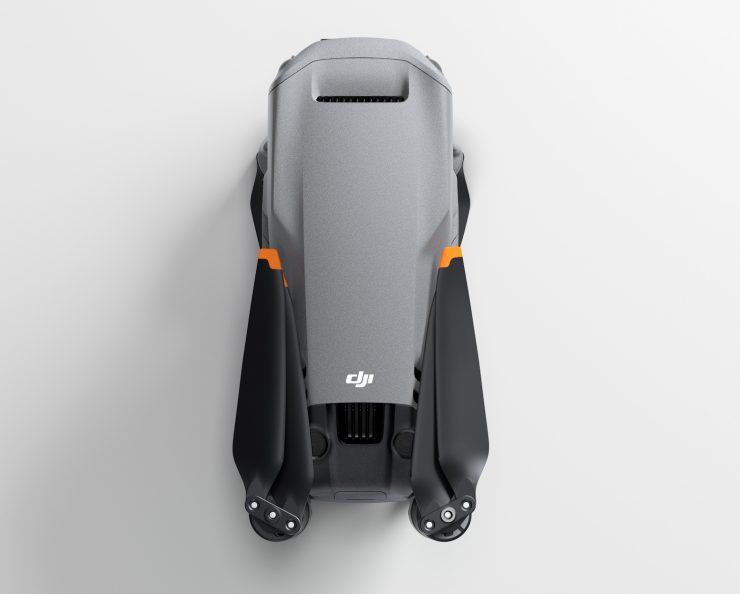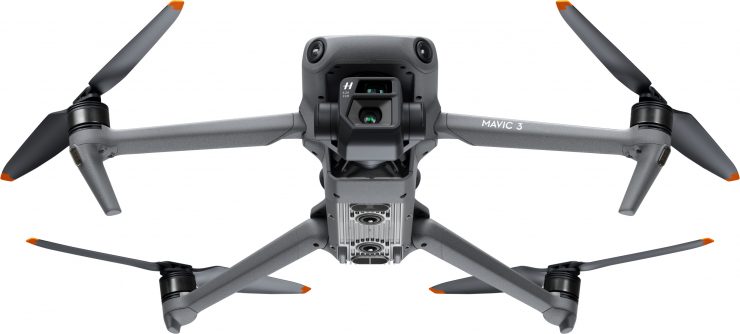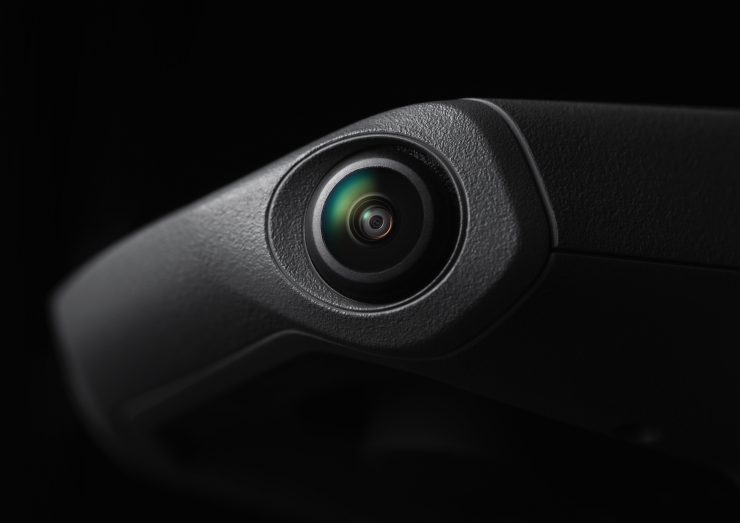DJI has announced the Mavic 3 and Mavic 3 Cine, the third iteration of drones in the popular Mavic series. They feature two different cameras and two different sensors. They can record up to 5.1K video at 50fps as well as 4K at up to 120fps. Both drones have a 47 minute flight time.
You can watch the full live stream event above
The Mavic 3 and Mavic 3 Cine utilize a 4/3 CMOS sensor Hasselblad camera and a 28x hybrid zoom camera that features a 1/2″ sensor. Both drones have a whopping 46 minutes of flight time and their omnidirectional obstacle sensors now have a maximum 200-meter range.
The Mavic 3 Cine essentially features all of the same capabilities as the Mavic 3, except it allows you to capture in ProRes 422 HQ at a maximum data rate of 3772 Mbps. To handle the large amounts of data from the ProRes codec and high frame rate videos, the Mavic 3 Cine comes with a built-in 1TB SSD. A new DJI 10Gbps Lightspeed Data Cable will help speed up transfers of large files from the SSD to your computer.
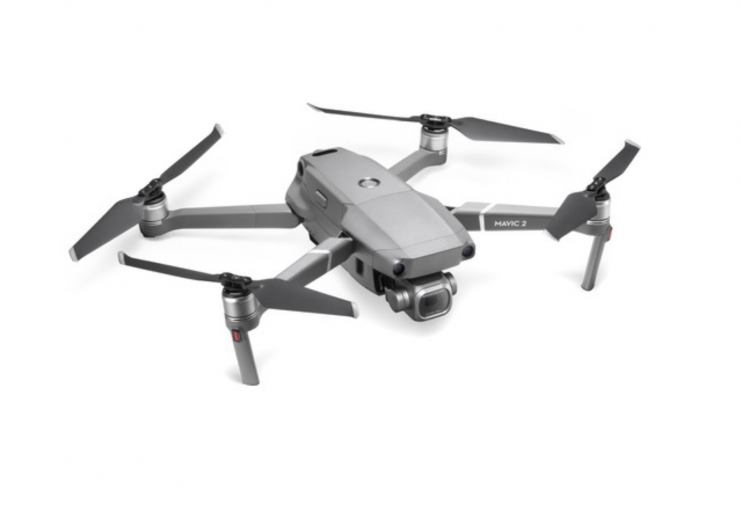
The Mavic 3 and Mavic 3 Cine build on the success of previous Mavic offerings. DJI has continually improved and enhanced the Mavic line since the inception of the original Mavic Pro that was announced in 2016.
Two Cameras & Two Sensors
The Mavic 3 and Mavic 3 Cine are the first DJI drone to incorporate two cameras and two sensors. These two cameras, although independent of each other, are housed in the same 3-axis gimble.
The L2D-20c aerial camera utilizes a 4/3″ CMOS sensor with 20MP (effective). It features a 24mm (format equivalent) focal length and a variable aperture of f/2.8-f/11. It has a minimum focusing distance of 1m / 3.28′. The ISO range when shooting video is 100-6400 ISO and for stills, it is 100-3200 ISO (auto setting) and 100-12,800 ISO (manual setting). The wide-angle camera has the option to choose either a mechanical or electronic shutter.
The second camera is a 162mm telephoto with 28x Hybrid Zoom (digital + optical) and an aperture of f/4.4. It has a minimum focusing distance of 3m / 9.84′. This camera utilizes its own 1/2″ sensor. The telephoto camera can only be used in search mode. Once the search mode is enabled, the camera zoom will exceed 7x and the Mavic 3 will automatically switch to the telephoto camera.
If you are using the telephoto lens, you can only record in H.264 or H.265 and not ProRes.
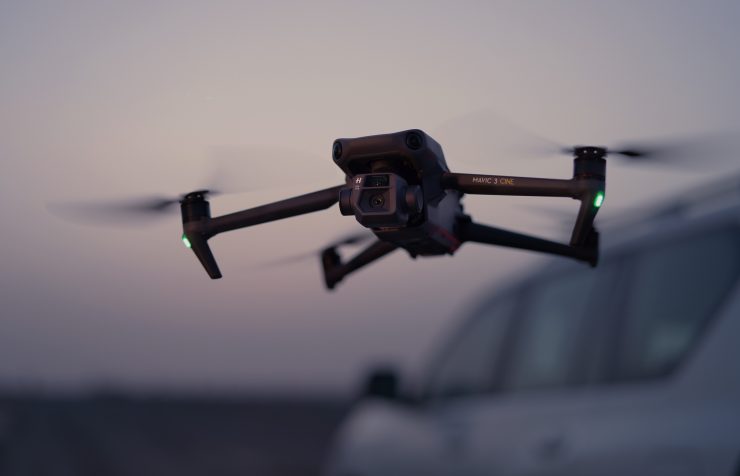
The larger image sensor (4/3″) is claimed to give the Mavic 3 and Mavic 3 Cine a higher dynamic range and more effectively suppresses noise in low-light environments. Both drones have a claimed dynamic range of 12.8 stops.
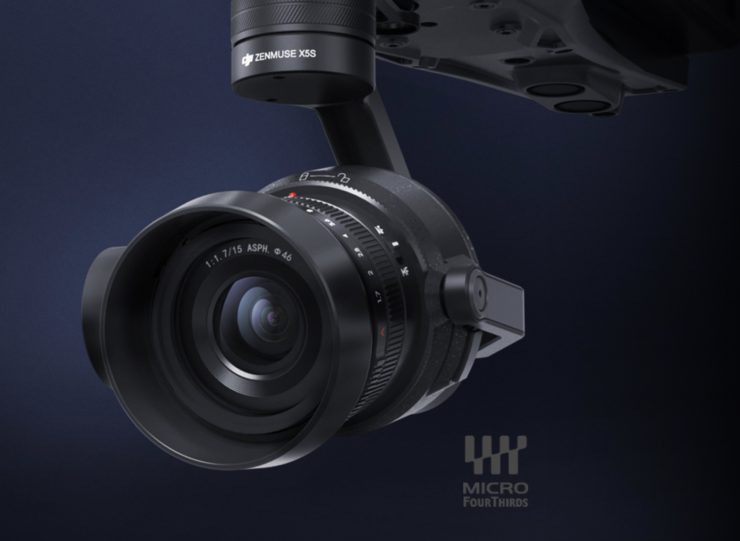
The sensor in the Mavic 3 and Mavic 3 Cine do appear to be very similar to the sensor that is used in DJI’s Zemmuse X5S. If you are not familiar with the X5S it is one of the cameras you can use with the Inspire 2.
DJI states that the Mavic 3 and Mavic 3 Cine use Hasselblad’s Natural Colour Solution (HNCS), which was introduced with the Mavic 2 Pro. The Mavic 3 can capture up to 1 billion colors using the 10-bit D-Log color profile.
Recording capabilities
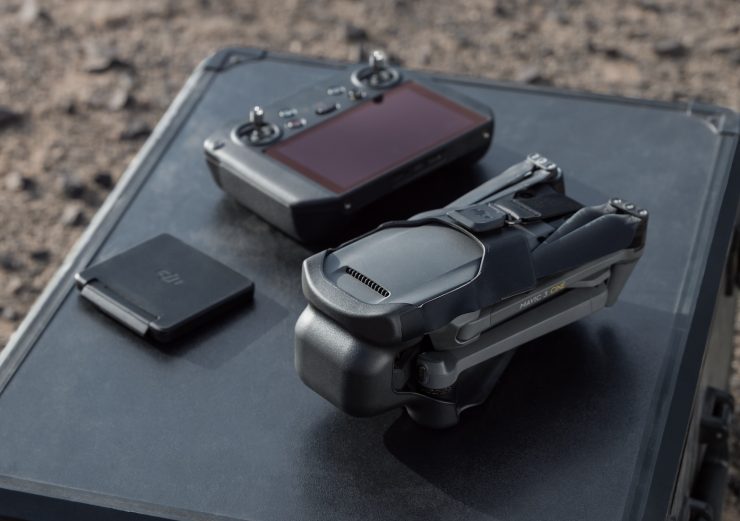
The Mavic 3 and Mavic 3 Cine can both record 5.1K video at up to 50fps as well as 4K at up to 120fps. They can also record 1080p up to 200fps.
The Mavic 3 can record in either H.264 or H.265 in 10-bit. The Mavic 3 Cine can record in H.264/H.265 and ProRes 422HQ. The data rate when recording 4K 120fps in ProRes 422HQ is a whopping 3772Mbps.
Below are the full recording capabilities. Please note that the Mavic 3 Cine is the only one of the two that is capable of capturing ProRes. There is no mention anywhere of whether or not the Mavic 3 Cine will be able to capture in other flavors of ProRes or ProRes RAW at some future point in time.
Apple ProRes 422 HQ*
- 5.1K: 5120×2700@24/25/30/48/50fps
- DCI 4K: 4096×2160@24/25/30/48/50/60/120fps**
- 4K: 3840×2160@24/25/30/48/50/60/120fps**
H264/H.265
- 5.1K: 5120×2700@24/25/30/48/50p
- DCI 4K: 4096×2160@24/25/30/48/50/60/120fps **
- 4K: 3840×2160@24/25/30/48/50/60/120fps**
- FHD: 1920×1080@24/25/30/48/50/60/120**/200fps**
*Only available in the Mavic 3 Cine
**Frame rates above are recording frame rates. Videos will be played as slow-motion videos. Please note that these high frame rate capabilities will not be available at launch. They will be added in a future firmware update.
The maximum bitrate when recording H.264 is 200Mbps, while in H.265 the maximum is 140Mbps. As a comparison, the Mavic 2 Pro was limited to 100 Mbps.
What is also interesting is that the Mavic 3 and Mavic 3 Cine file format gets recorded in exFAT instead of the annoying FAT32 (≤32 GB). The Mavic 3 and Mavic 3 Cine now support SDXC or UHS-I microSD cards with a capacity of up to 2 TB. The Mavic 2 Pro is officially listed as only supporting cards up to 128GB in capacity, but larger capacity cards will work.
The 1TB SSD that comes with the Mavic 3 Cine has the following read and write speeds:
Max Read Speed: 700MB/s
Max Write Speed: 471MB/s
These are not particularly quick speeds, but they are more than sufficient for capturing ProRes 422HQ. What you clearly need to remember is the 1TB SSD is in-built and can’t be removed. That means you can’t swap it out and keep flying. If it fills up you need to land, download the footage, erase the SSD and then start flying again.
Enhanced AF
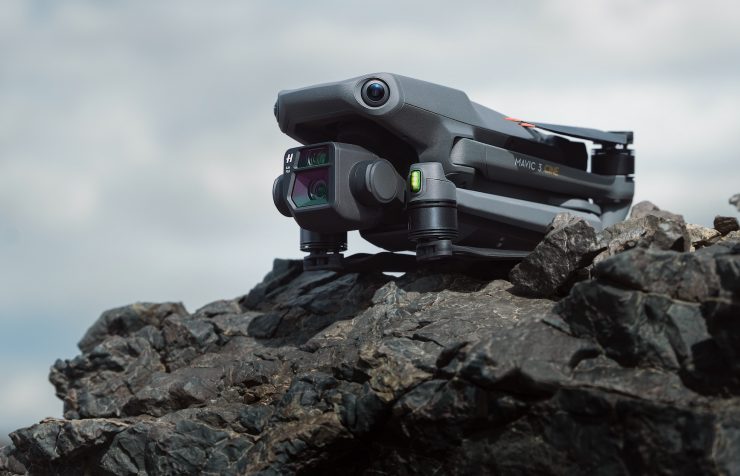
DJI has incorporated what they are referring to as new Vision Detection Auto Focus Technology. This allows the Mavic 3 and the Hasselblad camera to work with multiple vision sensors on board to capture distance data to optimize focusing speeds.
Extended Flight Times
The Mavic 3 has a claimed maximum flight time of up to 46 minutes (no wind & flying at 15.5mph / 25kph). This is very impressive, given the previous Mavic 2 had a maximum flight time of 31 minutes under the same conditions.
DJI developed new motors and propellers with higher energy efficiency. They also created a higher-capacity battery and reduced the weight of the drone’s structure and components. The new battery has a capacity of 5000 mAh which is a big increase from the 3850 mAh battery used in the Mavic 2 Pro.
What you need to be aware of is that the multi-battery charger that is available can only charge 3 batteries and not four like the one that was available with the Mavic 2 Pro.
DJI also streamlined the shape of Mavic 3’s arms, body, and gimbal on aerodynamic principles. Wind tunnel testing shows Mavic 3 produces 35% less drag than previous generations, allowing faster top speeds.
Size & Weight
The Mavic 3 and tips the scales at 895g / 1.97 lb. The Mavic 3 Cine is 899g / 1.98 lb. This makes it just marginally lighter than the Mavic 2 Pro (907g / 1.99 lb.
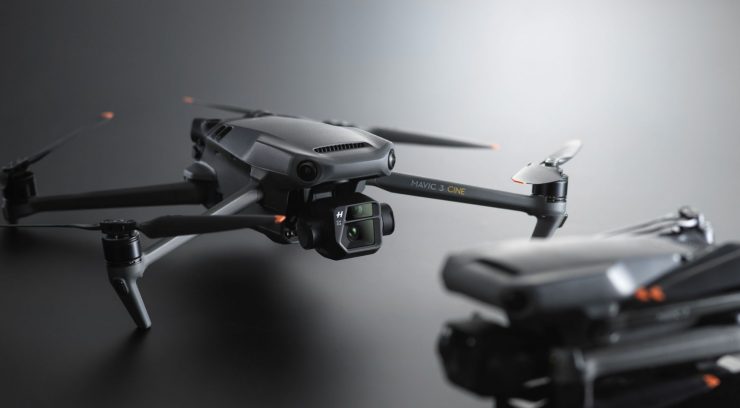
In terms of size, the Mavic 3 and the Mavic 3 Cine when folded (without propellers) have physical dimensions of 212 × 96.3 x 90.3 mm (Length×Width×Height). Unfolded (without propellers) they are both 347.5 × 283 × 107.7 mm (Length×Width×Height). This means it is not that much larger than the Mavic 2 Pro.
Speed
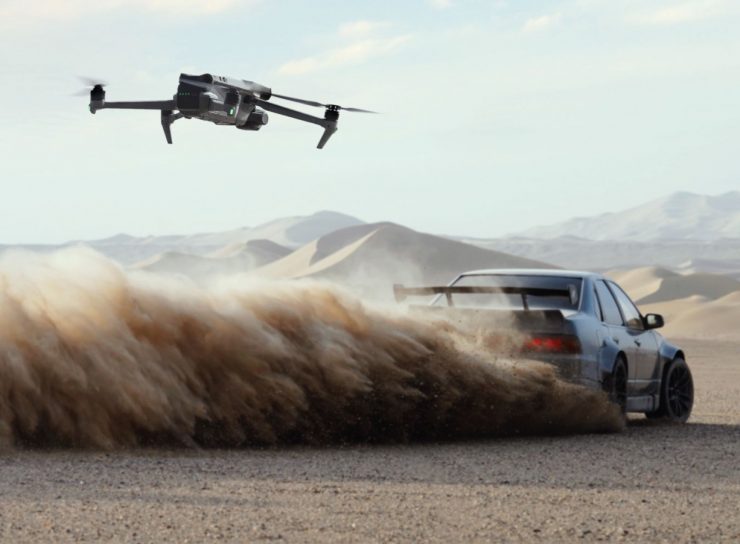
The maximum speed of the Mavic 3 and Mavic 3 Cine is 21 m/s (S mode), which is just a tiny bit faster than the 20 m/s (S mode) of the Mavic 2 Pro.
The maximum ascent speed of the Mavic 3 and Mavic 3 Cine is:
- 6 m/s (P mode)
- 8 m/s (S mode)
The maximum descent speed is also 6 m/s (P mode).
As a comparison, the Mavic 2 Pro has a maximum ascent speed of 4 m/s (P mode) and 5 m/s (S mode). Its maximum descent speed is 2 m/s (P mode).
This means that the Mavic 3 and Mavic 3 Cine are both quicker than the previous iteration at descending and ascending.
As far as wind speed resistance is concerned, the Mavic 3 and Mavic 3 Cine can withstand up to 10.8-13.8/s. This is an increase from the 8-10.7 m/s of the Mavic 2 Pro.
Obstacle Avoidance
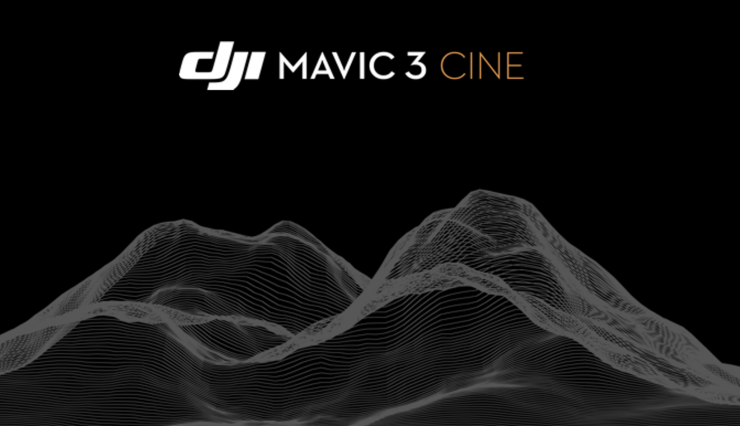
DJI drones have always featured impressive safety features and the Mavic 3 follows in those footsteps. The Mavic 3 features improved obstacle sensing and navigation systems. APAS 5.0 combines inputs from six fish-eye vision sensors and two wide-angle sensors, which continuously sense obstacles in all directions and plan safe flight routes to avoid them. DJI claims this even works in complicated environments.
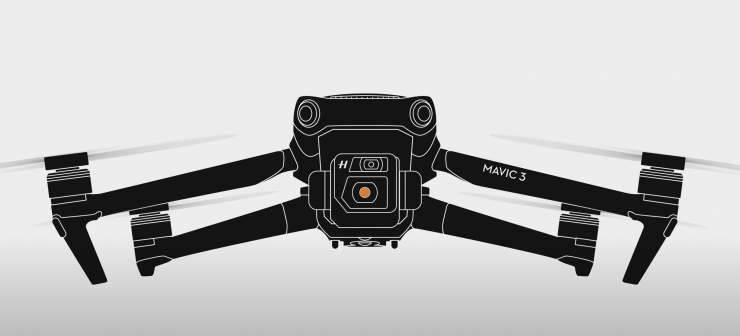
The forward-facing vision system on the Mavic 3 and Mavic 3 Cine has a range of 0.5-200 m / 1.64-656′. On the Mavic 2 Pro, the range was 0.5-40 m / 1.64-131′. The range of the downward/backward and lateral vision systems has also been increased over the Mavic 2 Pro.
The omnidirectional obstacle sensing system and subject tracking have been upgraded with ActiveTrack 5.0. This allows users to sense obstacles even in Normal mode. Previous iterations of ActiveTrack enabled the camera to follow a subject as it moved directly toward and away from the drone while remaining largely stationary as well as fly alongside a moving subject. ActiveTrack 5.0 allows Mavic 3 to move with the subject as it moves forward, backward, left, right, and diagonally, and fly alongside as well as around a moving subject. In addition, if the subject moves too fast and temporarily goes out of frame, the visual sensors on the camera body will continue to track and frame the subject intelligently and pick it back up when it reappears. These new directions enable much more fluid and diverse drone and camera movement while using ActiveTrack.
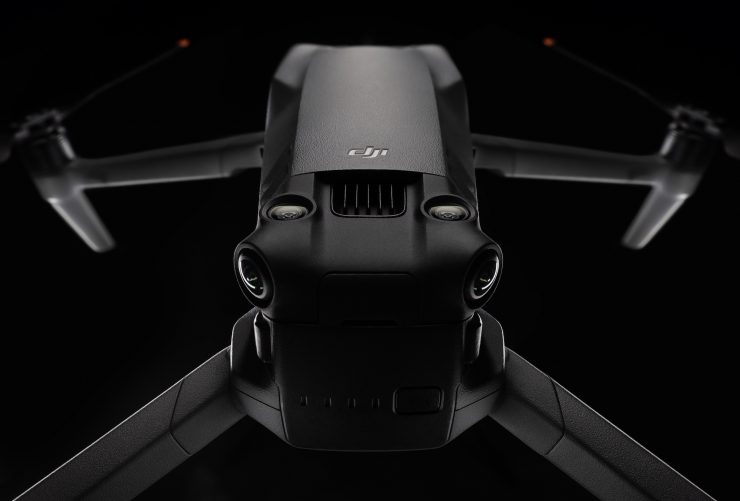
Mavic 3 comes with a new positioning algorithm that improves hovering precision with signals from GPS, GLONASS, and BeiDou satellites. This enables Mavic 3 to lock onto multiple satellite signals faster than previous versions. The increased positioning precision also makes Mavic 3 less likely to drift in the air and more stable when shooting long exposures and time-lapses.
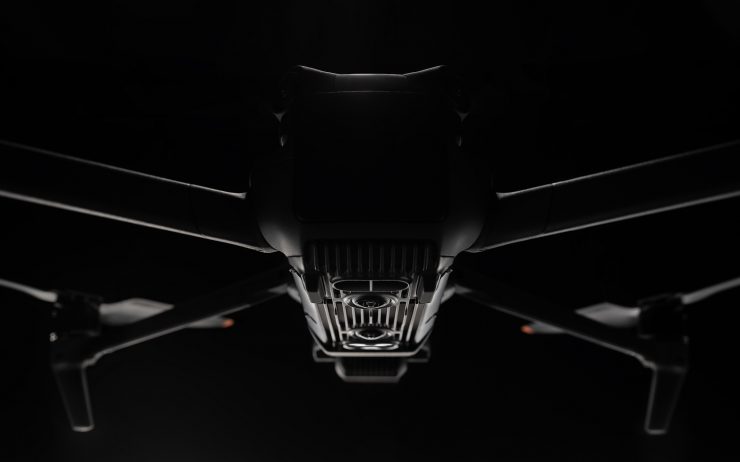
Mavic 3 features other safety systems such as geofencing to alert drone pilots when they fly near sensitive locations, altitude limits to ensure pilots are aware of altitude restrictions. The AeroScope Remote ID system allows authorities to identify and monitor airborne drones in sensitive locations. Mavic 3’s integrated AirSense system, first introduced in DJI Air 2S, warns drone pilots of nearby airplanes and helicopters transmitting ADS-B signals, so they can quickly fly to a safer location.
APAS 5.0 will be made available at launch and intelligent features including Active Track 5.0.
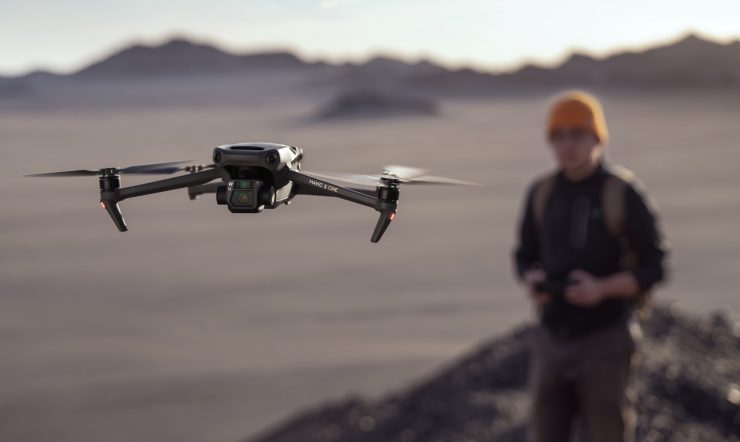
DJI’s Return To Home (RTH) system that automatically directs a drone back to its starting point if it runs critically low on battery or loses connection to the controller has been a staple of their drones for years. Previously the drone would ascend high enough to clear any obstacles in its path, fly back in a straight line, and descend straight down to the home point. Mavic 3 updates and improves this system by allowing the aircraft to automatically determine the shortest, safest, and energy-efficient route to land back at its home point. At the same time, the drone measures the wind speed of the current environment and calculates the power required for returning home based on the wind speed and the return path in real-time. This provides users with more time flying safely before triggering the RTH action.
DJI O3+ and Cellular Transmission Dongle
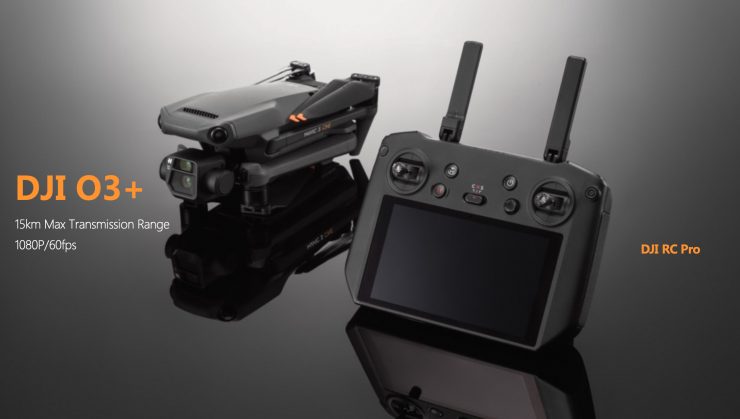
DJI O3+ is an upgraded transmission system that is claimed to deliver stable, smooth, and clear video transmission even under challenging conditions, even in environments with strong signal interference. With a maximum control range of 15km, O3+ enables Mavic 3 to fly further and transmits signals with higher stability and less video lag.
The Mavic 3 is also DJI’s first drone that offers a High Frame-Rate Transmission with a 1080p/60fps live feed. This means the camera view is displayed at a resolution close to what the camera actually records.
Intelligent Shooting Modes
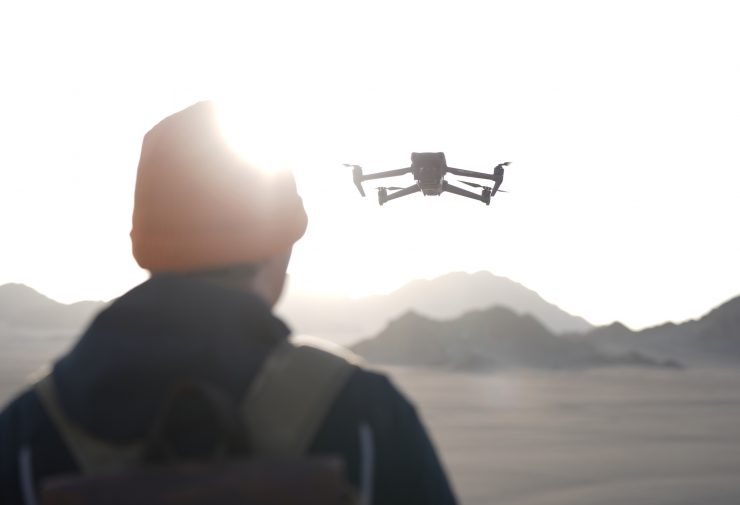
The Mavic 3 features a new array of Intelligent modes for capturing photos and videos. These include modes such as MasterShots and QuickTransfer.
- Panorama– The Mavic 3 allows pictures to be directly stitched and processed by the drone, without the DJI Fly App or any post-production.
- MasterShots– lets users create high-quality content more easily and quickly. After automatically editing and dubbing in the app, videos can be created in minutes and directly shared.
- Quick Transfer– lets users store and process material on a mobile device without having to link with the remote controller. Mavic 3 can now transmit material from the drone to a mobile device utilizing the Wi-Fi 6 protocol.
Mastershots and Quickshots will be made available through firmware updates after launch.
How does the Mavic 3 compare to the Mavic 2 Pro & DJI Air 2S?
| DJI MAVIC 3 | DJI MAVIC 2 PRO | DJI AIR 2S | |
| Sensor | 4/3″ CMOS 20MP 1/2″ CMOS | 1″ CMOS 20MP | 1″ CMOS 20MP |
| Camera | 24mm F2.8-F11 162mm telephoto with 28x Hybrid Zoom (digital + optical) & an F4.4 | 28mm F2.8-F11 | 22mm F2.8 |
| Supported Video Format | ProRes 422 HQ* 10-Bit D-Log | 10-Bit D-Log-M | 10-Bit D-Log-M |
| Highest Video Resolution & Framerate | 5.1K 50fps 4K DCI 120fps HD 200fps | 4K 30fps HD 120fps | 5.4K 30fps 4K 60fps HD 120fps |
| Flight Time | 46 minutes | 31 minutes | 31 minutes |
New Accessories
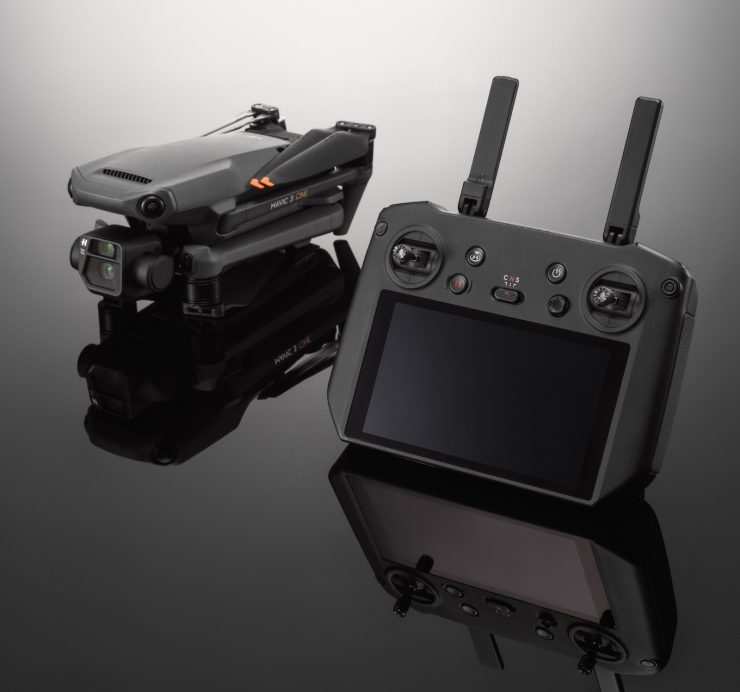
DJI RC Pro 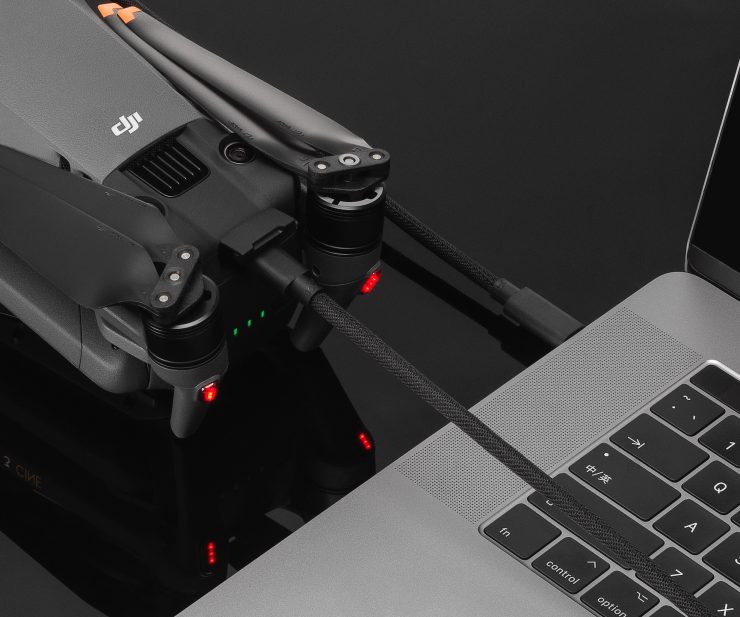
DJI 10Gbps Lightspeed Data Cable 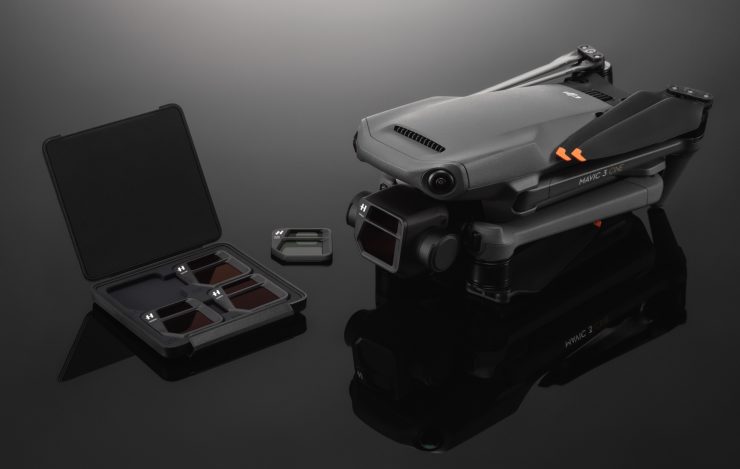
DJI ND Filters Set 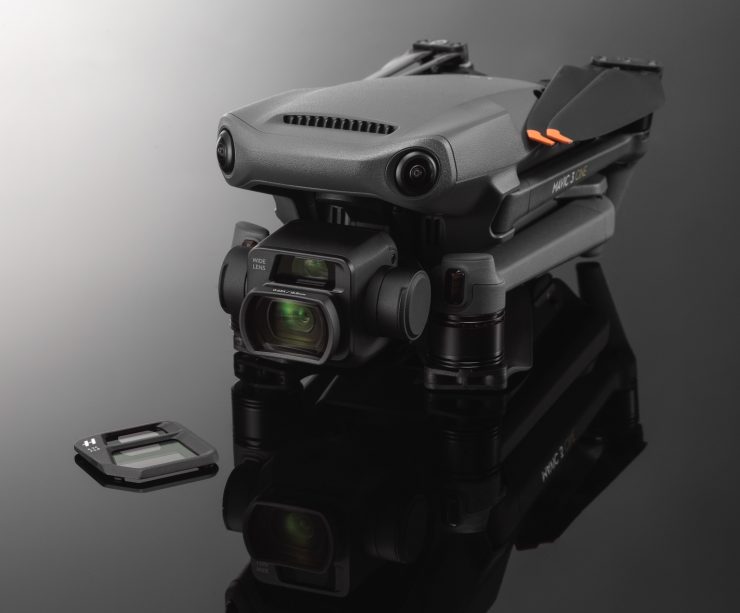
DJI Mavic 3 Wide-Angle Lens 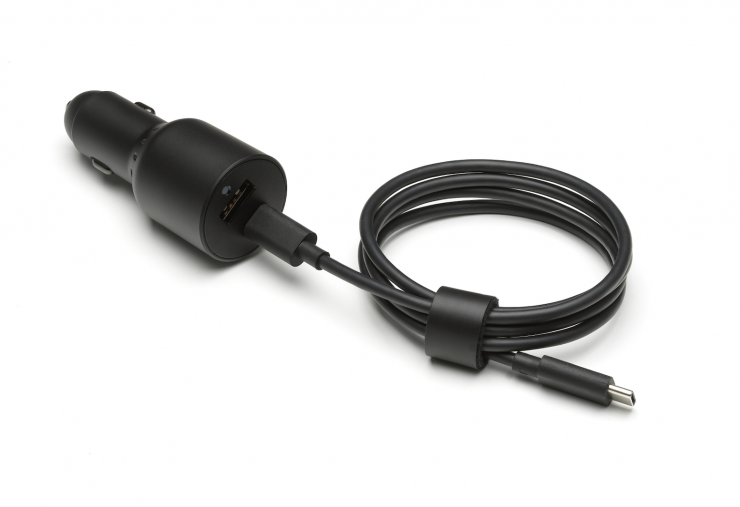
DJI 65W Portable Charger 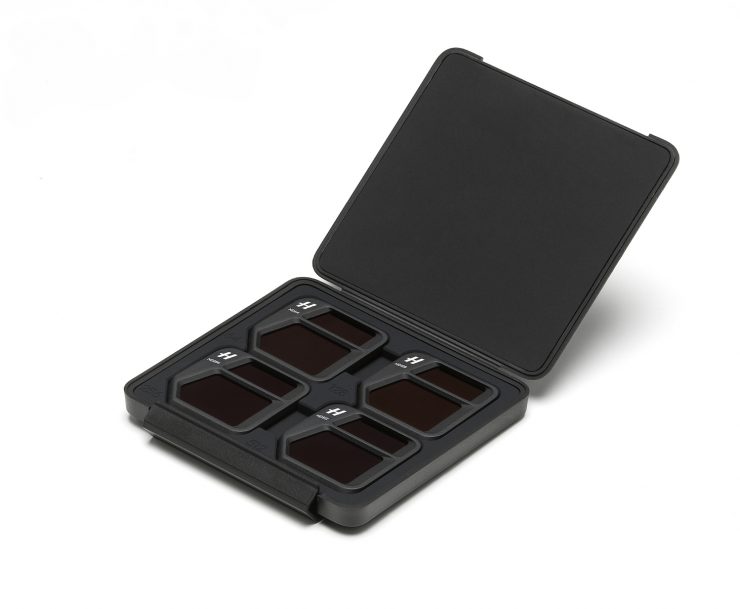
DJI ND Filters Set 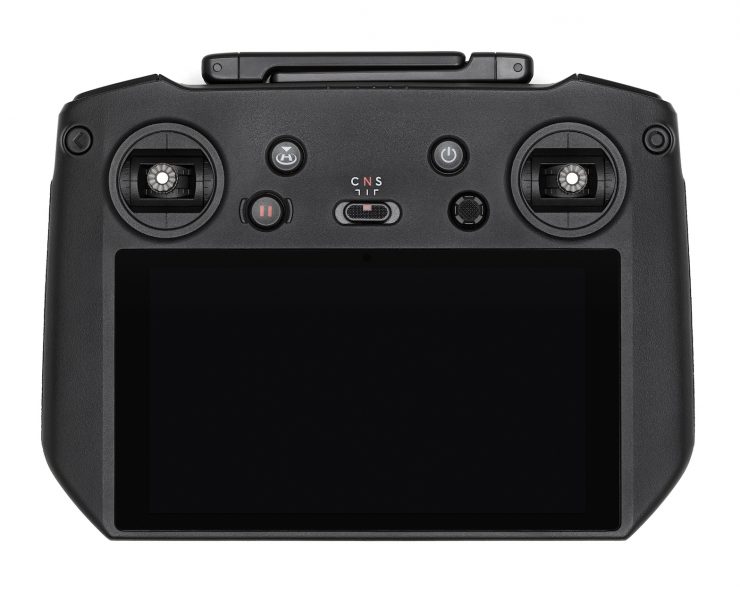
DJI RC Pro 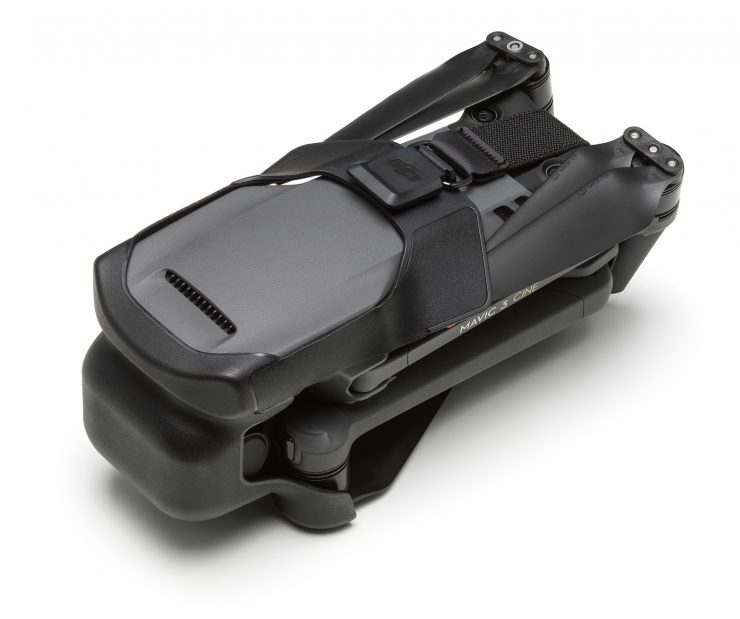
DJI Mavic 3 Storage Cover 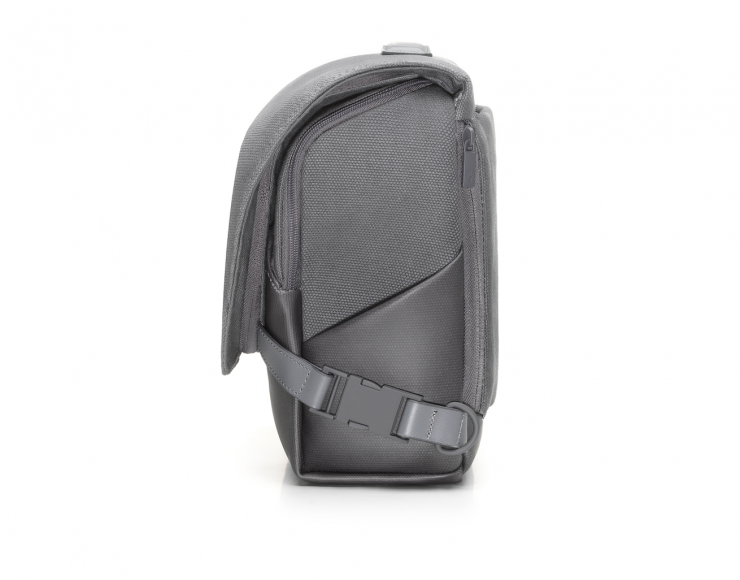
DJI Convertible Carrying Bag
DJI has also introduced a range of new accessories to compliment the Mavic 3 and Mavic Cine.
DJI RC Pro ($1,199 USD)- This is a new smart controller that features an upgraded and enhanced antenna for an extended transmission distance of up to 15 km. It’s 1000- nit high-bright screen allows for a better viewing experience outdoors. Its battery system offers an extended operating time of up to three hours and it charges in around 90 minutes.
DJI 65W Portable Charger ($179 USD)- This gives users a fast-charging option with a charging time of approximately 96 minutes and is compatible with current notebooks and smartphones thanks to its USB Type-C output.
DJI Convertible Carrying Bag ($319 USD)- This bag features an entirely new design with a backpack and shoulder bag configuration for storing a Mavic 3, accessories, a laptop, and even clothes and other personal items.
DJI Mavic 3 Wide-Angle Lens ($179 USD)- This offers an FOV of up to 108° for a more immersive FPV- style flight experience.
DJI Mavic 3 Storage Cover– This cover uses a lightweight, minimalist design to protect the camera, gimbal, and propellers when folding and transporting Mavic 3.
DJI ND Filters Set ($179 USD)- These filters come in two ranges – ND4/8/16/32 and ND64/128/256/512.
DJI 10Gbps Lightspeed Data Cable– This cable enables users to download footage from the drone to their computer at high speed.
DJI Care Refresh- DJI Care Refresh is now available for DJI Mavic 3, covering various accidents, such as water damage, collisions, and flyaways. For an additional charge, DJI Care Refresh offers up to two replacement units within one year, including coverage for one flyaway incident. The two-year plan provides three replacement units in two years, including coverage for up to two flyaway incidents and an extension of the original warranty period by one year (extension durations vary by region).
What is interesting is that the Mavic 3 and Mavic 3 do not support multiple controllers like the Mavic 2 Pro did.
Price & Availability
The DJI Mavic 3 and Mavic 3 Cine are available for purchase today. They are available in several configurations.
Mavic 3 Standard version- $2,199 USD
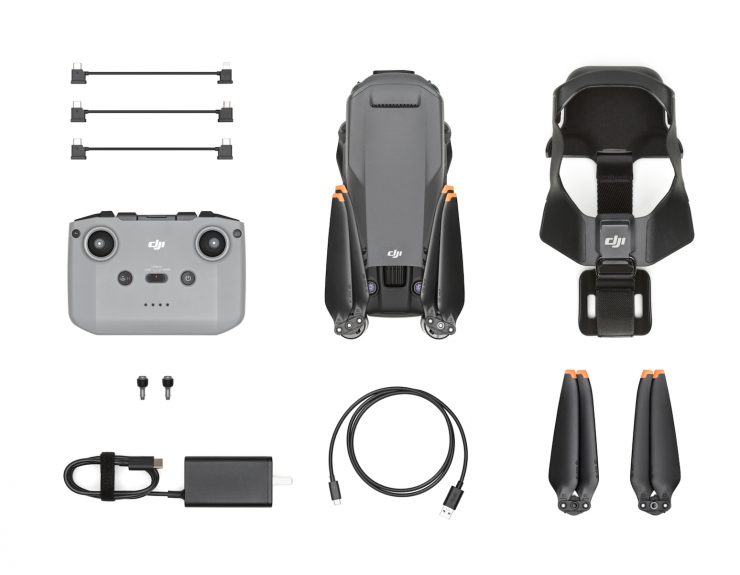
- 1x Mavic 3 drone
- 1x Intelligent Flight Battery
- 1x RC-N1 Remote Controller
- 3x RC-N1 Cable
- 1x Battery Charger
- 1x Storage Cover
- 3x Propellers (pair)
- Other essential items
DJI Mavic 3 Fly More Combo- $2,999 USD
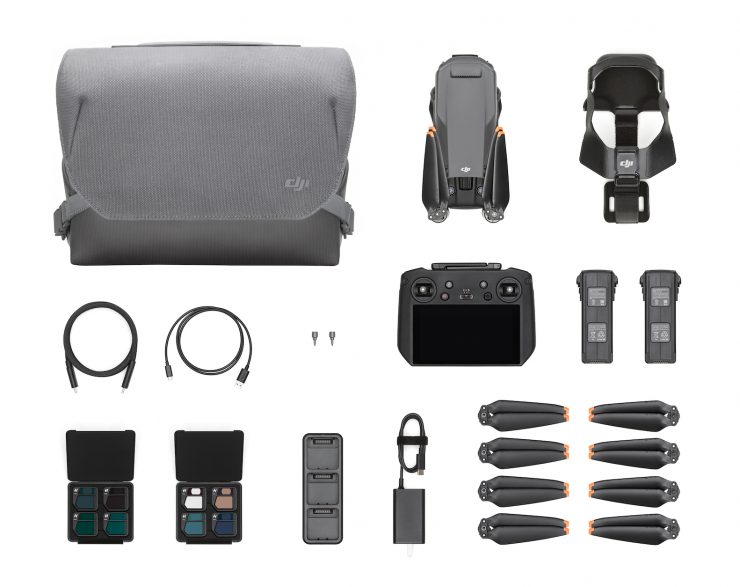
- 1x Mavic 3 drone
- 3x Intelligent Flight Battery
- 1x RC-N1 Remote Controller
- 3x RC -N1 Cable
- 1x Battery Charger
- 1x Battery Charging Hub
- 1x Storage Cover
- 6x Propellers (pair)
- 1x ND Filters Set (ND4\8\6\32)
- 1x Convertible Carrying Bag
- Other essential items
DJI Mavic 3 Cine Premium Combo- $4,999 USD (includes a built-in 1TB SSD, and supports Apple ProRes 422 HQ video recording)
DJI Mavic 3 Cine Premium Combo
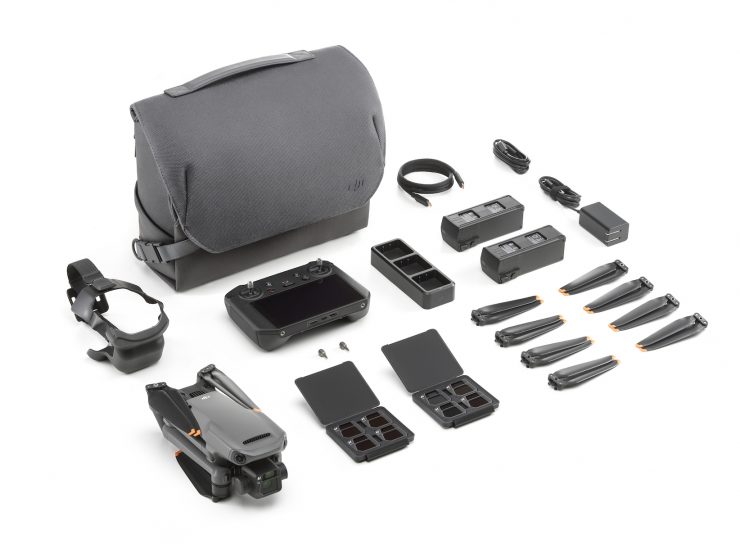
- 1x Mavic 3 Cine drone
- 3x Intelligent Flight Battery
- 1x DJI RC Pro
- 1x Battery Charger
- 1x Battery Charging Hub
- 1x Storage Cover
- 6x Propellers (pair)
- 1x ND Filters Set (ND4\8\6\32)
- 1x ND Filters Set (ND64\128\256\512)
- 1x Convertible Carrying Bag
- 1x DJI 10Gbps Lightspeed Data Cable
- Other essential items
The Mavic 3 and Mavic 3 Cine have certainly gotten a lot more expensive than their predecessors. The Mavic 2 Pro was $1,449 USD at launch and the Mavic 2 Zoom was $1,249 US. Yes, both the Mavic 3 and Mavic 3 Cine offer far better capabilities, however, are they really worth the massive price increase?
As they say, different strokes for different folks. Some people will be perfectly happy with the pricing and others may find the new Mavic’s a little on the steep side. Not every product is suitable for every user.
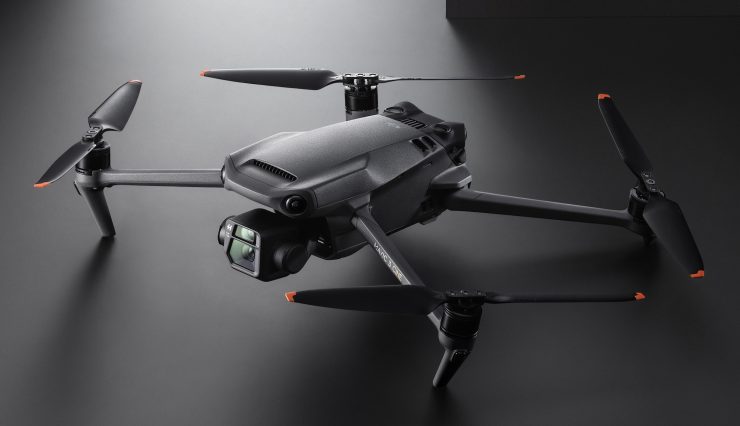
The Mavic 3 Cine seems to be very expensive given the fact that you are paying $2,000 USD just to get a 1TB SSD, the ability to record ProRes, and the DJI RC Pro. Yes, the RC Pro does cost close to $1200 USD when purchased separately, but items in combo deals are generally factored in at a lower cost. The Mavic Cine 3 also can only capture in one flavor of ProRes and that’s 422HQ, there is no ProRes 4444 or 4444HQ. That 1TB SSD isn’t particularly fast so I don’t think it would be costing DJI much to make it. I could perhaps understand if the Cine version was $1000 USD more than the standard Mavic 3, but $2000 USD does seem like DJI is having a laugh at consumers’ expense. In saying that, it may well be $2,000 USD more because DJI could be planning on putting ProRes RAW in the Mavic 3 Cine at a later date and they needed to pay royalties to do so.
If you are wondering why the Inspire 2 could do it, well, technically the camera and recording systems are detached so that is how they were able to get around any patent violations.
Of course, pricing is all relevant, and when there isn’t any direct competition you can price products higher than if there was competition. Depending on your perspective you could look at the Mavic 3 drones as either being expensive or very affordable.
There is no question that both the Mavic 3 and Mavic 3 Cine will be very capable drones. If you are a professional drone operator then it is a small cost to pay, but if you are just the occasional user, it may be more of a question mark as to whether it would be worth upgrading or not.
Thoughts
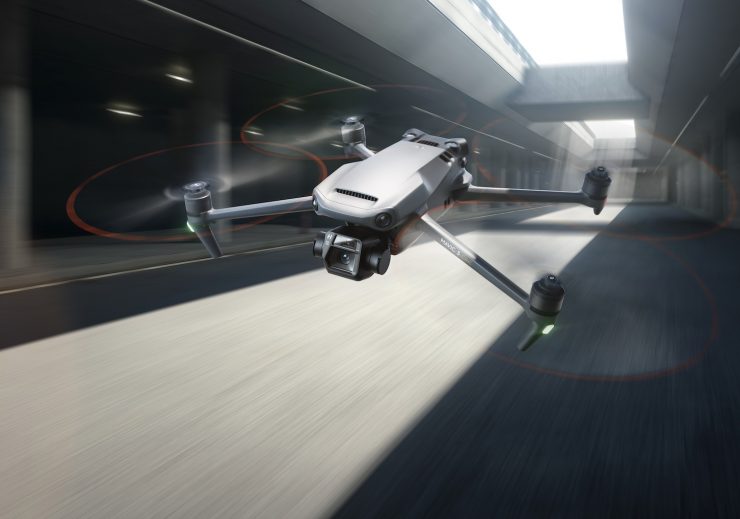
DJI has and continues to dominate the consumer and prosumer drone market. They don’t really have anyone competition that is seriously threatening them in this space. Sure, there are companies such as Autel, but they have a tiny proportion of the market share.
It is interesting to see that DJI has massively increased the pricing of the Mavic series. They are arguably now almost pricing them out of the reach of consumers and even some prosumers. Along with DJI’s recent announcement of the Ronin 4D, the new Mavic drones indicate to me that DJI is trying to move a certain sector of their business into a different market that is more catered to professionals. While there is certainly nothing wrong with that strategy, the market for drones, once you get above $3,000 USD in price, is considerably smaller than the market they have previously been targeting with the Mavic series.
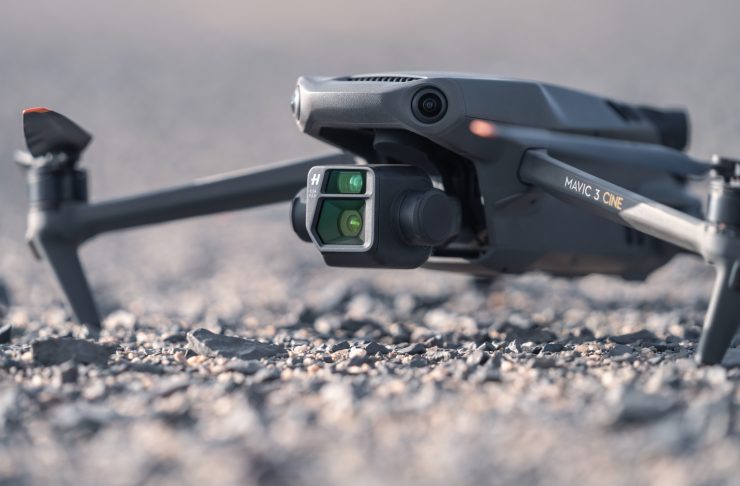
Given the Mavic 3 Cine costs $4,999 USD it will be interesting to see if we are ever going to ever see the return of the Inspire series. I still think there will be a new Inspire drone at some stage, especially since the Xenmuse X9 from the Ronin 4D could be used on a drone.
What do you think of the Mavic 3 and Mavic 3 Cine? Will you be running out to buy one? Do you think they are worth the price? Let us know in the comments section below.

